尔时。阿难及诸大众。闻佛示诲。身心泰然。念无始来。失却本心。妄认缘尘。分别影事。今日开悟。如失乳儿。忽遇慈母。合掌礼佛。愿闻如来。显出身心。真妄虚实。现前生灭。与不生灭。二发明性。
时。波斯匿王。起立白佛。我昔未承诸佛诲敕。见迦旃延。毗罗胝子。咸言。此身死后断灭。名为涅槃。我虽值佛。今犹狐疑。云何发挥。证知此心。不生灭地。令此大众。诸有漏者。咸皆愿闻。
佛告大王。汝身现存。今复问汝。汝此肉身。为同金刚常住不朽。为复变坏。
世尊。我今此身。终从变灭。
佛言。大王。汝未曾灭。云何知灭。
世尊。我此无常变坏之身。虽未曾灭。我观现前。念念迁谢。新新不住。如火成灰。渐渐销殒。殒亡不息。决知此身。当从灭尽。
佛言。如是。大王。汝今生龄。已从衰老。颜貌何如童子之时。
世尊。我昔孩孺。肤腠润泽。年至长成。血气充满。而今颓龄。迫于衰耄。形色枯悴。精神昏昧。发白面皱。逮将不久。如何见比充盛之时。
佛言。大王。汝之形容。应不顿朽。
王言。世尊。变化密移。我诚不觉。寒暑迁流。渐至于此。何以故。我年二十。虽号年少。颜貌已老初十年时。三十之年又衰二十。于今六十又过于二。观五十时。宛然强壮。世尊。我见密移。虽此殂落。其间流易。且限十年。若复令我微细思惟。其变宁惟一纪二纪。实为年变。岂惟年变。亦兼月化。何直月化。兼又日迁。沉思谛观。刹那刹那。念念之间。不得停住。故知我身。终从变灭。
佛言。大王。汝见变化。迁改不停。悟知汝灭。亦于灭时。知汝身中有不灭耶。
波斯匿王。合掌白佛。我实不知。
佛言。我今示汝不生灭性。大王。汝年几时。见恒河水。
王言。我生三岁。慈母携我。谒耆婆天。经过此流。尔时即知是恒河水。
佛言。大王。如汝所说。二十之时衰于十岁。乃至六十。日月岁时。念念迁变。则汝三岁见此河时。至年十三。其水云何。
王言。如三岁时。宛然无异。乃至于今。年六十二。亦无有异。
佛言。汝今自伤发白面皱。其面必定皱于童年。则汝今时。观此恒河。与昔童时。观河之见。有童耄否。
王言。否也。世尊。
佛言。大王。汝面虽皱。而此见精。性未曾皱。皱者为变。不皱非变。变者受灭。彼不变者。元无生灭。云何于中受汝生死。而犹引彼末伽黎等。都言此身死后全灭。
王闻是言。信知身后。舍生趣生。与诸大众。踊跃欢喜。得未曾有。
阿难即从座起。礼佛合掌。长跪白佛。世尊。若此见闻。必不生灭。云何世尊。名我等辈。遗失真性。颠倒行事。愿兴慈悲。洗我尘垢。
即时。如来垂金色臂。轮手下指。示阿难言。汝今见我母陀罗手。为正为倒。
阿难言。世间众生。以此为倒。而我不知谁正谁倒。
佛告阿难。若世间人。以此为倒。即世间人。将何为正。
阿难言。如来竖臂。兜罗绵手。上指于空。则名为正。
佛即竖臂。告阿难言。若此颠倒。首尾相换。诸世间人。一倍瞻视。则知汝身。与诸如来。清净法身。比类发明。如来之身。名正遍知。汝等之身。号性颠倒。随汝谛观。汝身佛身。称颠倒者。名字何处。号为颠倒。
于时。阿难与诸大众。瞪瞢瞻佛。目精不瞬。不知身心。颠倒所在。佛兴慈悲。哀愍阿难。及诸大众。发海潮音。遍告同会。诸善男子。我常说言。色心诸缘。及心所使。诸所缘法。惟心所现。汝身汝心。皆是妙明真精妙心中所现物。云何汝等。遗失本妙。圆妙明心。宝明妙性。认悟中迷。晦昧为空。空晦暗中。结暗为色。色杂妄想。想相为身。聚缘内摇。趣外奔逸。昏扰扰相。以为心性。一迷为心。决定惑为色身之内。不知色身。外洎山河虚空大地。咸是妙明真心中物。譬如澄清百千大海。弃之。惟认一浮沤体。目为全潮。穷尽瀛渤。汝等即是迷中倍人。如我垂手。等无差别。如来说为可怜愍者。
阿难承佛悲救深诲。垂泣叉手。而白佛言。我虽承佛如是妙音。悟妙明心。元所圆满。常住心地。而我悟佛现说法音。现以缘心。允所瞻仰。徒获此心。未敢认为本元心地。愿佛哀愍。宣示圆音。拔我疑根。归无上道。
佛告阿难。汝等尚以缘心听法。此法亦缘。非得法性。如人以手。指月示人。彼人因指。当应看月。若复观指。以为月体。此人岂惟亡失月轮。亦亡其指。何以故。以所标指。为明月故。岂惟亡指。亦复不识明之与暗。何以故。即以指体。为月明性。明暗二性。无所了故。汝亦如是。若以分别我说法音。为汝心者。此心自应离分别音。有分别性。譬如有客。寄宿旅亭。暂止便去。终不常住。而掌亭人。都无所去。名为亭主。此亦如是。若真汝心。则无所去。云何离声。无分别性。斯则岂惟声分别心。分别我容。离诸色相。无分别性。如是乃至分别都无。非色非空。拘舍离等。昧为冥谛。离诸法缘。无分别性。则汝心性。各有所还。云何为主。
阿难言。若我心性。各有所还。则如来说。妙明元心。云何无还。惟垂哀愍。为我宣说。
佛告阿难。且汝见我。见精明元。此见虽非妙精明心。如第二月。非是月影。汝应谛听。今当示汝无所还地。阿难。此大讲堂。洞开东方。日轮升天。则有明耀。中夜黑月。云雾晦暝。则复昏暗。户牖之隙。则复见通。墙宇之间。则复观壅。分别之处。则复见缘。顽虚之中。遍是空性。郁孛之象。则纡昏尘。澄霁敛氛。又观清净。阿难。汝咸看此诸变化相。吾今各还本所因处。云何本因。阿难。此诸变化。明还日轮。何以故。无日不明。明因属日。是故还日。暗还黑月。通还户牖。壅还墙宇。缘还分别。顽虚还空。郁孛还尘。清明还霁。则诸世间一切所有。不出斯类。汝见八种见精明性。当欲谁还。何以故。若还于明。则不明时。无复见暗。虽明暗等。种种差别。见无差别。诸可还者。自然非汝。不汝还者。非汝而谁。则知汝心。本妙明净。汝自迷闷。丧本受轮。于生死中。常被漂溺。是故。如来名可怜愍。
阿难言。我虽识此见性无还。云何得知是我真性。
佛告阿难。吾今问汝。今汝未得无漏清净。承佛神力。见于初禅。得无障碍。而阿那律。见阎浮提。如观掌中庵摩罗果。诸菩萨等。见百千界。十方如来。穷尽微尘清净国土。无所不瞩。众生洞视。不过分寸。阿难。且吾与汝。观四天王所住宫殿。中间遍览水陆空行。虽有昏明。种种形像。无非前尘。分别留碍。汝应于此。分别自他。今吾将汝择于见中。谁是我体。谁为物象。阿难。极汝见源。从日月宫。是物非汝。至七金山。周遍谛观。虽种种光。亦物非汝。渐渐更观。云腾鸟飞。风动尘起。树木山川。草芥人畜。咸物非汝。阿难。是诸近远诸有物性。虽复差殊。同汝见精。清净所瞩。则诸物类。自有差别。见性无殊。此精妙明。诚汝见性。若见是物。则汝亦可见吾之见。若同见者。名为见吾。吾不见时。何不见吾不见之处。若见不见。自然非彼不见之相。若不见吾不见之地。自然非物。云何非汝。又则汝今见物之时。汝既见物。物亦见汝。体性纷杂。则汝与我。并诸世间。不成安立。阿难。若汝见时。是汝非我。见性周遍。非汝而谁。云何自疑汝之真性。性汝不真。取我求实。
阿难白佛言。世尊。若此见性。必我非余。我与如来。观四天王胜藏宝殿。居日月宫。此见周圆。遍娑婆国。退归精舍。只见伽蓝。清心户堂。但瞻檐庑。世尊。此见如是。其体本来周遍一界。今在室中。惟满一室。为复此见缩大为小。为当墙宇夹令断绝。我今不知斯义所在。愿垂弘慈。为我敷演。
佛告阿难。一切世间。大小内外。诸所事业。各属前尘。不应说言见有舒缩。譬如方器。中见方空。吾复问汝。此方器中所见方空。为复定方。为不定方。若定方者。别安圆器。空应不圆。若不定者。在方器中。应无方空。汝言不知斯义所在。义性如是。云何为在。阿难。若复欲令入无方圆。但除器方。空体无方。不应说言。更除虚空方相所在。若如汝问。入室之时。缩见令小。仰观日时。汝岂挽见齐于日面。若筑墙宇。能夹见断。穿为小窦。宁无窦迹。是义不然。一切众生。从无始来。迷己为物。失于本心。为物所转。故于是中。观大观小。若能转物。则同如来。身心圆明。不动道场。于一毛端。遍能含受十方国土。
阿难白佛言。世尊。若此见精。必我妙性。令此妙性。现在我前。见必我真。我今身心。复是何物。而今身心分别有实。彼见无别分辨我身。若实我心。令我今见。见性实我。而身非我。何殊如来先所难言。物能见我。惟垂大慈。开发未悟。
佛告阿难。今汝所言。见在汝前。是义非实。若实汝前。汝实见者。则此见精。既有方所。非无指示。且今与汝。坐祇陀林。遍观林渠。及与殿堂。上至日月。前对恒河。汝今于我狮子座前。举手指陈。是种种相。阴者是林。明者是日。碍者是壁。通者是空。如是乃至草树纤毫。大小虽殊。但可有形。无不指着。若必有见。现在汝前。汝应以手确实指陈。何者是见。阿难。当知若空是见。既已成见。何者是空。若物是见。既已是见。何者为物。汝可微细披剥万象。析出精明净妙见元。指陈示我。同彼诸物。分明无惑。
阿难言。我今于此重阁讲堂。远洎恒河。上观日月。举手所指。纵目所观。指皆是物。无是见者。世尊。如佛所说。况我有漏初学声闻。乃至菩萨。亦不能于万物象前。剖出精见。离一切物。别有自性。
佛言。如是如是。佛复告阿难。如汝所言。无有精见。离一切物。别有自性。则汝所指是物之中。无是见者。今复告汝。汝与如来。坐祇陀林。更观林苑。乃至日月。种种象殊。必无见精。受汝所指。汝又发明此诸物中。何者非见。
阿难言。我实遍见此祇陀林。不知是中。何者非见。何以故。若树非见。云何见树。若树即见。复云何树。如是乃至若空非见。云何为空。若空即见。复云何空。我又思惟。是万象中。微细发明。无非见者。
佛言。如是如是。
于是大众。非无学者。闻佛此言。茫然不知是义终始。一时惶悚。失其所守。如来知其魂虑变慑。心生怜愍。安慰阿难。及诸大众。诸善男子。无上法王。是真实语。如所如说。不诳不妄。非末伽黎。四种不死矫乱论议。汝谛思惟。无忝哀慕。
是时。文殊师利法王子。愍诸四众。在大众中。即从座起。顶礼佛足。合掌恭敬。而白佛言。世尊。此诸大众。不悟如来发明二种精见色空。是非是义。世尊。若此前缘。色空等象。若是见者。应有所指。若非见者。应无所瞩。而今不知是义所归。故有惊怖。非是畴昔善根轻鲜。惟愿如来。大慈发明。此诸物象。与此见精。元是何物。于其中间。无是非是。
佛告文殊。及诸大众。十方如来。及大菩萨。于其自住三摩地中。见与见缘。并所想相。如虚空花。本无所有。此见及缘。元是菩提妙净明体。云何于中有是非是。文殊。吾今问汝。如汝文殊。更有文殊。是文殊者。为无文殊。
如是。世尊。我真文殊。无是文殊。何以故。若有是者。则二文殊。然我今日。非无文殊。于中实无是非二相。
佛言。此见妙明。与诸空尘。亦复如是。本是妙明。无上菩提净圆真心。妄为色空。及与闻见。如第二月。谁为是月。又谁非月。文殊。但一月真。中间自无是月非月。是以汝今观见与尘。种种发明。名为妄想。不能于中出是非是。由是精真妙觉明性。故能令汝出指非指。
阿难白佛言。世尊。诚如法王所说。觉缘遍十方界。湛然常住。性非生灭。与先梵志。娑毗迦罗。所谈冥谛。及投灰等。诸外道种。说有真我。遍满十方。有何差别。世尊亦曾于楞伽山。为大慧等。敷演斯义。彼外道等。常说自然。我说因缘。非彼境界。我今观此觉性自然。非生非灭。远离一切虚妄颠倒。似非因缘。与彼自然。云何开示。不入群邪。获真实心。妙觉明性。
佛告阿难。我今如是开示方便。真实告汝。汝犹未悟。惑为自然。阿难。若必自然。自须甄明有自然体。汝且观此妙明见中。以何为自。此见为复以明为自。以暗为自。以空为自。以塞为自。阿难。若明为自。应不见暗。若复以空为自体者。应不见塞。如是乃至诸暗等相。以为自者。则于明时。见性断灭。云何见明。
阿难言。必此妙见。性非自然。我今发明是因缘性。心犹未明。咨询如来。是义云何。合因缘性。
佛言。汝言因缘。吾复问汝。汝今同见。见性现前。此见为复因明有见。因暗有见。因空有见。因塞有见。阿难。若因明有。应不见暗。如因暗有。应不见明。如是乃至因空因塞。同于明暗。复次。阿难。此见又复缘明有见。缘暗有见。缘空有见。缘塞有见。阿难。若缘空有。应不见塞。若缘塞有。应不见空。如是乃至缘明缘暗。同于空塞。当知如是精觉妙明。非因非缘。亦非自然。非不自然。无非不非。无是非是。离一切相。即一切法。汝今云何于中措心。以诸世间戏论名相。而得分别。如以手掌。撮摩虚空。只益自劳。虚空云何随汝执捉。
阿难白佛言。世尊。必妙觉性。非因非缘。世尊。云何常与比丘。宣说见性具四种缘。所谓。因空因明。因心因眼。是义云何。
佛言。阿难。我说世间诸因缘相。非第一义。阿难。吾复问汝。诸世间人。说我能见。云何名见。云何不见。
阿难言。世人因于日月灯光。见种种相。名之为见。若复无此三种光明。则不能见。
阿难。若无明时。名不见者。应不见暗。若必见暗。此但无明。云何无见。阿难。若在暗时。不见明故。名为不见。今在明时。不见暗相。还名不见。如是二相。俱名不见。若复二相自相陵夺。非汝见性于中暂无。如是则知二俱名见。云何不见。是故。阿难。汝今当知。见明之时。见非是明。见暗之时。见非是暗。见空之时。见非是空。见塞之时。见非是塞。四义成就。汝复应知。见见之时。见非是见。见犹离见。见不能及。云何复说因缘自然。及和合相。汝等声闻。狭劣无识。不能通达清净实相。吾今诲汝。当善思惟。无得疲怠。妙菩提路。
阿难白佛言。世尊。如佛世尊。为我等辈。宣说因缘。及与自然。诸和合相。与不和合。心犹未开。而今更闻见见非见。重增迷闷。伏愿弘慈。施大慧目。开示我等觉心明净。作是语已。悲泪顶礼。承受圣旨。
尔时。世尊怜愍阿难。及诸大众。将欲敷演大陀罗尼。诸三摩提。妙修行路。告阿难言。汝虽强记。但益多闻。于奢摩他。微密观照。心犹未了。汝今谛听。吾今为汝分别开示。亦令将来。诸有漏者。获菩提果。阿难。一切众生。轮回世间。由二颠倒分别见妄。当处发生。当业轮转。云何二见。一者。众生别业妄见。二者。众生同分妄见。云何名为别业妄见。阿难。如世间人。目有赤眚。夜见灯光。别有圆影。五色重迭。于意云何。此夜灯明所现圆光。为是灯色。为当见色。阿难。此若灯色。则非眚人何不同见。而此圆影。惟眚之观。若是见色。见已成色。则彼眚人见圆影者。名为何等。复次。阿难。若此圆影离灯别有。则合傍观屏帐几筵。有圆影出。离见别有。应非眼瞩。云何眚人目见圆影。是故。当知色实在灯。见病为影。影见俱眚。见眚非病。终不应言是灯是见。于是中有非灯非见。如第二月。非体非影。何以故。第二之观。捏所成故。诸有智者。不应说言。此捏根元。是形非形。离见非见。此亦如是。目眚所成。今欲名谁是灯是见。何况分别非灯非见。云何名为同分妄见。阿难。此阎浮提。除大海水。中间平陆。有三千洲。正中大洲。东西括量。大国凡有二千三百。其余小洲在诸海中。其间或有三两百国。或一或二。至于三十四十五十。阿难。若复此中。有一小洲。只有两国。惟一国人。同感恶缘。则彼小洲。当土众生。睹诸一切不祥境界。或见二日。或见两月。其中乃至晕蚀佩玦。彗孛飞流。负耳虹霓。种种恶相。但此国见。彼国众生。本所不见。亦复不闻。阿难。吾今为汝。以此二事。进退合明。阿难。如彼众生。别业妄见。瞩灯光中所现圆影。虽现似境。终彼见者。目眚所成。眚即见劳。非色所造。然见眚者。终无见咎。例汝今日。以目观见山河国土。及诸众生。皆是无始见病所成。见与见缘。似现前境。元我觉明见所缘眚。觉见即眚。本觉明心。觉缘非眚。觉所觉眚。觉非眚中。此实见见。云何复名觉闻知见。是故。汝今见我及汝。并诸世间十类众生。皆即见眚。非见眚者。彼见真精。性非眚者。故不名见。阿难。如彼众生同分妄见。例彼妄见别业一人。一病目人。同彼一国。彼见圆影。眚妄所生。此众同分所现不祥。同见业中。瘴恶所起。俱是无始见妄所生。例阎浮提。三千洲中。兼四大海。娑婆世界。并洎十方。诸有漏国。及诸众生。同是觉明无漏妙心。见闻觉知虚妄病缘。和合妄生。和合妄死。若能远离诸和合缘。及不和合。则复灭除诸生死因。圆满菩提。不生灭性。清净本心。本觉常住。阿难。汝虽先悟本觉妙明。性非因缘。非自然性。而犹未明如是觉元。非和合生。及不和合。阿难。吾今复以前尘问汝。汝今犹以。一切世间。妄想和合。诸因缘性。而自疑惑。证菩提心和合起者。则汝今者妙净见精。为与明和。为与暗和。为与通和。为与塞和。若明和者。且汝观明。当明现前。何处杂见。见相可辨。杂何形像。若非见者。云何见明。若即见者。云何见见。必见圆满。何处和明。若明圆满。不合见和。见必异明。杂则失彼性明名字。杂失明性。和明非义。彼暗与通。及诸群塞。亦复如是。复次。阿难。又汝今者妙净见精。为与明合。为与暗合。为与通合。为与塞合。若明合者。至于暗时。明相已灭。此见即不与诸暗合。云何见暗。若见暗时。不与暗合。与明合者。应非见明。既不见明。云何明合。了明非暗。彼暗与通。及诸群塞。亦复如是。
阿难白佛言。世尊。如我思惟。此妙觉元。与诸缘尘。及心念虑。非和合耶。
佛言。汝今又言觉非和合。吾复问汝。此妙见精。非和合者。为非明和。为非暗和。为非通和。为非塞和。若非明和。则见与明。必有边畔。汝且谛观。何处是明。何处是见。在见在明。自何为畔。阿难。若明际中必无见者。则不相及。自不知其明相所在。畔云何成。彼暗与通。及诸群塞。亦复如是。又妙见精。非和合者。为非明合。为非暗合。为非通合。为非塞合。若非明合。则见与明。性相乖角。如耳与明。了不相触。见且不知明相所在。云何甄明合非合理。彼暗与通。及诸群塞。亦复如是。阿难。汝犹未明一切浮尘。诸幻化相。当处出生。随处灭尽。幻妄称相。其性真为妙觉明体。如是乃至五阴六入。从十二处。至十八界。因缘和合。虚妄有生。因缘别离。虚妄名灭。殊不能知。生灭去来。本如来藏。常住妙明。不动周圆。妙真如性。性真常中。求于去来。迷悟死生。了无所得。阿难。云何五阴。本如来藏。妙真如性。阿难。譬如有人。以清净目。观晴明空。惟一精虚。迥无所有。其人无故。不动目睛。瞪以发劳。则于虚空。别见狂花。复有一切狂乱非相。色阴当知。亦复如是。阿难。是诸狂花。非从空来。非从目出。如是。阿难。若空来者。既从空来。还从空入。若有出入。即非虚空。空若非空。自不容其花相起灭。如阿难体。不容阿难。若目出者。既从目出。还从目入。即此花性从目出故。当合有见。若有见者。去既花空。旋合见眼。若无见者。出既翳空。旋当翳眼。又见花时。目应无翳。云何晴空。号清明眼。是故。当知色阴虚妄。本非因缘。非自然性。阿难。譬如有人。手足宴安。百骸调适。忽如忘生。性无违顺。其人无故。以二手掌。于空相摩。于二手中。妄生涩滑冷热诸相。受阴当知。亦复如是。阿难。是诸幻触。不从空来。不从掌出。如是。阿难。若空来者。既能触掌。何不触身。不应虚空。选择来触。若从掌出。应非待合。又掌出故。合则掌知。离即触入。臂腕骨髓。应亦觉知入时踪迹。必有觉心。知出知入。自有一物。身中往来。何待合知。要名为触。是故。当知受阴虚妄。本非因缘。非自然性。阿难。譬如有人。谈说醋梅。口中水出。思踏悬崖。足心酸涩。想阴当知。亦复如是。阿难。如是醋说。不从梅生。非从口入。如是。阿难。若梅生者。梅合自谈。何待人说。若从口入。自合口闻。何须待耳。若独耳闻。此水何不耳中而出。想踏悬崖。与说相类。是故。当知想阴虚妄。本非因缘。非自然性。阿难。譬如暴流。波浪相续。前际后际。不相逾越。行阴当知。亦复如是。阿难。如是流性。不因空生。不因水有。亦非水性。非离空水。如是。阿难。若因空生。则诸十方无尽虚空。成无尽流。世界自然俱受沦溺。若因水有。则此暴流性应非水。有所有相。今应现在。若即水性。则澄清时。应非水体。若离空水。空非有外。水外无流。是故。当知行阴虚妄。本非因缘。非自然性。阿难。譬如有人取频伽瓶。塞其两孔。满中擎空。千里远行。用饷他国。识阴当知。亦复如是。阿难。如是虚空。非彼方来。非此方入。如是。阿难。若彼方来。则本瓶中既贮空去。于本瓶地。应少虚空。若此方入。开孔倒瓶。应见空出。是故。当知识阴虚妄。本非因缘。非自然性。
When Ananda and the great assembly heard the Buddha's instructions, they became peaceful and composed both in body and mind. They recollected that since time without beginning, they had strayed from their fundamental true mind by mistakenly taking the shadows of the differentiations of conditioned defilements to be real. Now on this day as they awakened, they were each like a lost infant who suddenly finds its beloved mother. They put their palms together to make obeisance to the Buddha. They wished to hear the Tathagata enlighten them to the dual nature of body and mind, of what is false, of what is true, of what is empty and what is existent, and of what is subject to production and extinction and what transcends production and extinction.
Then King Prasenajit rose and said to the Buddha, ”In the past, when I had not yet received the teachings of the Buddha, I met Katyayana and Vairatiputra, both of whom said that this body ends at death, and that this is Nirvana. Now, although I have met the Buddha, I still wonder about that. How can I go about realizing the mind at the level of no production and no extinction? Now all in this Great Assembly who still have outflows also wish to be instructed on this subject.“
The Buddha said to the great king, ”Let's talk about your body as it is right now. Now I ask you, will your physical body be like vajra, indestructible and living forever? Or will it change and go bad?“
”Bhagavan, this body of mine will keep changing until it eventually perishes.“ The Buddha said, ”Great king, you have not yet perished. How do you know you will perish?“ ”Bhagavan, although my impermanent, changing, and decaying body has not yet become extinct, I observe it now, as every passing thought fades away. Each new one fails to remain, but is gradually extinguished like fire turning wood to ashes. This ceaseless extinguishing convinces me that this body will eventually completely perish.“
The Buddha said, ”So it is. Great king, at your present age you are already old and declining. How does your appearance and complexion compare to when you were a youth?“
”Bhagavan, in the past when I was young my skin was moist and shining. When I reached the prime of life, my blood and breath were full. But now in my declining years, as I race into old age, my form is withered and wizened and my spirit dull. My hair is white and my face is wrinkled and not much time remains for me. How could one possibly compare me now with the way I was when in my prime?“
The Buddha said, ”Great king, your appearance should not decline so suddenly.“ The king said, ”Bhagavan, the change has been a hidden transformation of which I honestly have not been aware. I have come to this gradually through the passing of winters and summers. How did it happen? In my twenties, I was still young, but my features had aged since the time I was ten. My thirties were a further decline from my twenties, and now at ‘sixty-two I look back at my fifties as hale and hearty.
“Bhagavan, I now contemplate these hidden transformations. Although the changes wrought by this process of dying are evident through the decades, I might consider them further in finer detail: these changes do not occur just in periods of twelve years; there are actually changes year by year. Not only are there annual changes, there are also monthly transformations. Nor does it stop at monthly transformations; there are also differences day by day. Examining them closely, I find that kshana by kshana, thought after thought, they never stop. And so I know my body will keep changing until it has perished.”
The Buddha told the Great King, “By watching the ceaseless changes of these transformations, you awaken and know of your perishing, but do you also know that at the time of perishing there is something in your body which does not become extinct?”
King Prasenajit put his palms together and said to the Buddha, “I really do not know.”
The Buddha said, “I will now show you the nature which is neither produced and nor extinguished. Great King, how old were you when you saw the waters of the Ganges?”
The King said, “When I was three years old my compassionate mother led me to visit the goddess Jiva. We passed a river, and at the time I knew it was the waters of the Ganges.”
The Buddha said, “Great King, you have said that when you were twenty you had deteriorated from when you were ten. Day by day, month by month, year by year until you reached sixty, in thought after thought there has been change. Yet when you saw the Ganges River at the age of three, how was it different from when you were thirteen?”
The King said, “It was no different from when I was three, and even now when I am sixty-two it is still no different.”
The Buddha said, “Now you are mournful that your hair is white and your face wrinkled. In the same way that your face is definitely more wrinkled then it was in your youth, has the seeing with which you look at the Ganges aged, so that it is old now but was young when you looked at the river as a child in the past?”
The King said, “No, Bhagavan.”
The Buddha said, “Great King, your face is wrinkled, but the essential nature of your seeing will never wrinkle. What wrinkles is subject to change. What does not wrinkle does not change. What changes will perish, but what does not change is fundamentally free of production and extinction. How could it be subject to your birth and death? Furthermore, why bring up what Maskari G oshaliputra and the others say: that after the death of this body there is total annihilation?”
The king heard these words, believed them, and realized that when the life of this body is finished, there will be rebirth. He and the entire great assembly were greatly delighted at having obtained what they never had before.
Ananda then arose from this seat, made obeisance to the Buddha, put his palms together, knelt on both knees, and said to the Buddha, “Bhagavan, if this seeing and hearing are indeed neither produced nor extinguished, why did Bhagavan refer to us people as having lost our true natures and as going about things in an upside-down way? I hope that Bhagavan will give rise to great compassion and wash my dust and defilement away.”
Then the Tathagata let his golden-colored arm fall so his webbed fingers pointed downward, and demonstrating this to Ananda, said, “You see the position of my hand: is it right-side-up or upside-down?” Ananda said, “Being in the world take it to be upside-down. I myself do not know what is right-side-up and what is upside-down.”
The Buddha said to Ananda, “If people of the world take this as upside-down, what do people of the world take to be right-side-up? Ananda said, ”They call it right-side-up when the Tathagata raises his arm, with the fingers of his cotton-soft hand pointing up in the air.“
The Buddha then held up his hand and said: ”And so for it to be upside-down would be for it to be just the opposite of this. Or at least that’s how people of the world would regard it. In the same way they will differentiate between your body and the Tathagata's pure Dharmabody and will say that the Tathagata's body is one of right and universal knowledge, while your body is upside down. But examine your body and the Buddha's closely for this upside-downness: What exactly does the term ‘upside down’ refer to?“
Thereupon Ananda and the entire great assembly were dazed and stared unblinking at the Buddha. They did not know in what way their bodies and minds were upside down.
The Buddha's compassion arose as he empathized with Ananda and all in the great assembly and he spoke to the great assembly in a voice that swept over them like the ocean-tide. ”All of you good people, I have often said that all conditions that bring about forms and the mind as well as dharmas pertaining to the mind and all the conditioned dharmas are manifestations of the mind only. Your bodies and your minds all appear within the wonder of the bright, true, essential, magnificent mind. Why do I say that you have lost track of what is fundamentally wonderful, the perfect, wonderful bright mind, and that in the midst of your gem-like bright and wonderful nature, you wallow in confusion while being right within enlightenment.
“Mental dimness turns into emptiness. This emptiness, in the dimness, unites with darkness to become form. Form mixes with false thinking and the thoughts take shape and become the body. As causal conditions come together, there are perpetual internal disturbances which tend to gallop outside. Such inner turmoil is often mistaken for the nature of the mind. Once that is mistaken to be the mind, a further delusion determines that it is located in the physical body. You do not know that the physical body as well as the mountains, the rivers, empty space, and the great earth are all within the wonderful bright true mind. Such a delusion is like ignoring hundreds of thousands of clear pure seas and taking notice of only a single bubble, seeing it as the entire ocean, as the whole expanse of the great and small seas.
Refuting the false perception to eliminate the fourth aggregate
and reveal the non-existence of the seventh consciousness
Ananda's wrong view
”You people are doubly deluded among the deluded. Such delusion does not differ from that caused by my lowered hand. The Tathagata says you are pathetic.“
Having received the Buddha's compassionate rescue and profound instruction, Ananda wept, folded his hands, and said to the Buddha, ”I have heard these wonderful sounds of the Buddha and have awakened to the primal perfection of the wonderful bright mind as being the eternally dwelling mind-ground. But now in awakening to the Dharma-sounds that the Buddha is speaking, I know that I have been using my conditioned mind to regard and revere them. Having just become aware of that mind, I dare yet claim to recognize that fundamental mind-ground. I pray that the Buddha will be compassionate and with his perfect voice explain to us in order to pull our doubts out by the roots and enable us to return to the unsurpassed Way.“
Unreality of illusory causes
The Buddha told Ananda, ”You and others like you still listen to the Dharma with the conditioned mind, and so the Dharma becomes conditioned as well, and you do not obtain the Dharma-nature. This is similar to a person pointing his finger at the moon to show it to someone else. Guided by the finger, the other person should see the moon. If he looks at the finger instead and mistakes it for the moon, he loses not only the moon but the finger also. Why? Because he mistakes the pointing finger for the bright moon. Not only does he lose the finger, but he also fails to recognize light and darkness. Why? He mistakes the solid matter of the finger for the bright nature of the moon, and so he does not understand the two natures of light and darkness. The same is true of you.
“If you take what distinguishes the sound of my speaking Dharma to be your mind, then that mind itself, apart from the sound which is distinguished, should have a nature which makes distinctions. Take the example of the guest who lodged overnight at an inn; he stopped temporarily and then went on. He did not dwell there permanently, whereas the innkeeper did not go anywhere, since he was the host of the inn.
Falseness of both sense organs and consciousness
”The same applies here. If it were truly your mind, it would not go anywhere. And so why in the absence of sound does it have no discriminating nature of its own? This, then, applies not only to the distinguishing of sound, but in distinguishing my appearance, that mind has no distinction-making nature apart from the attributes of form. This is true even when the making of distinctions is totally absent; when there is no form and no emptiness, or in the obscurity which Goshali and others take to be the ‘profound truth’: that mind still does not have a distinction-making nature in the absence of casual conditions.
“How can we say that the nature of that mind of yours plays the part of host since everything perceived by it can be returned to something else?” Ananda said, “If every state of our mind can be returned to something else as its cause, then why does the wonderful bright original mind mentioned by the Buddha return nowhere? We only hope that the Buddha will empathize with us and explain this for us.”
The Buddha said to Ananda, “As you now look at me, the essence of your seeing is fundamentally bright. Although that seeing is not the wonderful essential brightness of the mind, it is like a second moon, rather than the moon's reflection. Listen attentively, for I am now going to explain to you the concept of not returning to anything.
”Ananda, this great lecture hall is open to the east. When the sun rises in the sky, it is flooded with light. At midnight, during a new moon or when the moon is obscured by clouds or fog, it is dark. Looking out through open doors and windows your vision is unimpeded; facing walls or houses your vision is hindered. In such places where there are forms of distinctive features Your vision is causally conditioned. In a dull void, you can see only emptiness. Your vision will be distorted when the objects of seeing are shrouded in dust and vapor; you will perceive clearly when the air is fresh. Ananda, observe all these transitory characteristics as I now return each to its source. What are their sources? Ananda, among these transitions, the light can be returned to the sun. Why? Without the sun there would be no light; therefore the cause of light belongs with the sun, and so it can be returned to the sun. Darkness can be returned to the new moon.
Penetration can be returned to the doors and windows while obstruction can be returned to the walls and eaves. Conditions can be returned to distinctions. Emptiness can be returned to dull emptiness. Darkness and distortion can be returned to mist and haze. Bright purity can be returned to freshness, and nothing that exists in this world goes beyond these categories. To which of the eight states of perception would the essence of your seeing be reducible? Why do I ask that? If it returned to brightness, you would not see darkness when there was no light. Although such states of perception as light, darkness, and the like differ from one another, your seeing remains unchanged.
“That which can be returned to other sources clearly is not you; if that which you cannot return to anything else is not you, then what is it? Therefore I know that your mind is fundamentally wonderful, bright, and pure. You yourself are confused and deluded. You abuse what is fundamental, and end up undergoing the cycle of rebirth, bobbing up and down in the sea of birth and death. No wonder the Tathagata says that you are the most pathetic of creatures.”
Ananda said, “Although I recognize that the seeing-nature cannot be traced back to anything, but how can I come to know that it is my true nature?”
The Buddha told Ananda, “Now I have a question for you. At this point you have not yet attained the purity of no outflows. Blessed by the Buddha's holy strength, you are able to see into the first dhyana heavens without any obstruction, just as Aniruddha looks at Jambudvipa with such clarity as he might at an amala fruit in the palm of his hand. Bodhisattvas can see hundreds of thousands of realms. The Tathagatas of the ten directions see everything throughout pure lands as numerous as atoms of universe. By contrast, ordinary beings' sight does not extend beyond a fraction of an inch.”
“Ananda, as you and I now look at the palace where the four heavenly kings reside, and inspect all that moves in the water, on dry land, and in the air, some are dark and some are bright, varying in shape and appearance, and yet all of these are nothing but the dust before us, taking solid form only through our own distinction-making. Among them you should distinguish which is self and which is other. I ask you now to select from within your seeing which is the substance of the self and which is the appearance of things. Ananda, if you take a good look at everything everywhere within the range of your vision extending from the palaces of the sun and moon to the seven gold mountain ranges, all that you see is phenomena of different features and degrees of light. At closer range you will gradually see clouds floating, birds flying, wind blowing, dust rising, trees, mountains, streams, grasses, seeds, people, and animals, all of which are phenomena, but none of which are you.”
“Ananda, all phenomena, near and far, have their own nature. Although each is distinctly different, they are seen with the same pure essence of seeing. Thus all the categories of phenomena have their individual distinctions, but the seeing-nature has no differences. That essential wonderful brightness is most certainly your seeing-nature.”
“If seeing were a phenomenon, then you should also be able to see my seeing. If we both looked at the same phenomenon, you would also be seeing my seeing. Then, when I'm not seeing, why can't you see my not-seeing? If you could see my not-seeing, it clearly would not be the phenomenon that I am not seeing. If you cannot not see my not seeing, then it is clearly not a phenomena. How could it not be you? Besides that, if your seeing of phenomena was like that, then when you saw things, things should also see you. With substance and nature mixed together, you and I and everyone in the world would no longer be distinguishable from each other.”
“Ananda, when you see, it is you who sees, not me. The seeing-nature pervades everywhere; whose is it if it is not yours? Why do you have doubts about your own true-nature and come to me seeking verification, thinking your nature is not true?”
Ananda said to the Buddha, “Bhagavan, given that this seeing-nature is certainly mine and no one else's, when the Tathagata and I regard the hall of the Four Heavenly Kings with its supreme abundance of jewels or stay at the palace of the sun and moon, this seeing completely pervades the lands of the Saha world. Upon returning to this sublime lecture hall, the seeing only observes the monastic grounds and once inside the pure central hall, it only sees the eaves and corridors. Bhagavan, that is how the seeing is. At first its substance pervaded everywhere throughout the one realm, but now in the midst of this room it fills one room only. Does the seeing shrink from great to small, or do the walls and eaves press in and cut it off? Now I do not know where the meaning of this lies and hope the Buddha will extend his vast compassion and proclaim it for me thoroughly.”
The Buddha told Ananda, “All the aspects of everything in the world, such as big and small, inside and outside, amount to the dust before you. Do not say the seeing stretches and shrinks. Consider the example of a square container in which a square of emptiness is seen. I ask you further: is the square emptiness that is seen in the square container a fixed square shape, or is it not fixed as a square shape? If it is a fixed square shape, when it is switched to a round container the emptiness would not be round. If it is not a fixed shape, then when it is in the square container it should not be a square-shaped emptiness. You say you do not know where the meaning lies. The nature of the meaning being thus, how can you speak of its location? Ananda, if you wished there to be neither squareness nor roundness, you would only need to remove the container. The essential emptiness has no shape, and so do not say that you would also have to remove the shape from the emptiness. If, as you suggest, your seeing shrinks and becomes small when you enter a room, then when you look up at the sun shouldn't your seeing be pulled out until it reaches the sun's surface? If walls and eaves can press in and cut off your seeing, then why if you were to drill a small hole, wouldn't there be evidence of the seeing reconnecting? And so that idea is not feasible.
”From beginningless time until now, all beings have mistaken themselves for phenomena and, having lost sight of their original mind, are influenced by phenomena, and end up having the scope of their observations defined by boundaries large and small. If you can influence phenomena, then you are the same as the Tathagata. With body and mind perfect and bright, you are your own unmoving Way-place. The tip of a single fine hair can completely contain the lands of the ten directions.“
Ananda said to the Buddha, ”Bhagavan, if this seeing-essence is indeed my wonderful nature, my wonderful nature should no be right in front of me. The seeing being truly me, what, then, are my present body and mind? Yet it is my body and mind which make distinctions, whereas the seeing does not make distinctions and does not discern my body. If it were really my mind which caused me to see now, then the seeing-nature would actually be me, and my body would not be me.
How would that differ from the question the Tathagata asked about phenomena being able to see me? I only hope the Buddha will extend his great compassion and explain for those who have not yet awakened.“
The Buddha told Ananda, ”What you have just now said—that the seeing is in front of you—is actually not the case. If it were actually in front of you, it would be something you could actually see, and then the seeing-essence would have a location. There would have to be some evidence of it. Now as you sit in the Jeta Grove you look about everywhere at the grove, the pond, the halls, up at the sun and moon, and at the Ganges River before you. Now, before my Lion's Seat, point out these various appearances: what is dark is the groves, what is bright is the sun, what is obstructing is the walls, what is clear is emptiness, and so on including even the grasses and trees, and the most minute objects. Their sizes vary, but since they all have appearances, all can be located. If you insist that your seeing is in front of you, then you should be able to point it out. What is the seeing?
“Ananda, if emptiness were the seeing, then since it had already become your seeing, what would have become of emptiness? If phenomena were the seeing, since they had already become the seeing, what would have become of phenomena? You should be able to cut through and peel away the myriad appearances to the finest degree and thereby distinguish and bring forth the essential brightness and pure wonder of the source of seeing, pointing it out and showing it to me from among all these things, so that it is perfectly clear beyond any doubt.”
Ananda said, “From where I am now in this many-storied lecture hall, reaching to the distant Ganges River and the sun and moon overhead, all that I might raise my hand to point to, all that I indulge my eyes in seeing, all are phenomena; they are not the seeing. Bhagavan, it is as the Buddha has said: not to mention someone like me, a Hearer of the first stage, who still has outflows, even Bodhisattvas cannot break open and reveal, among the myriad appearances which are before them, an essence of seeing which has a special nature of its own apart from all phenomena.”
The Buddha said, “So it is, so it is.”
The Buddha further said to Ananda, “It is as you have said. No seeing-essence that would have a nature of its own apart from all phenomena can be found. Therefore, all the phenomena you point to are phenomena, and none of them is the seeing. Now I will tell you something else: as you and the Tathagata sit here in the Jeta Grove and look again at the groves and gardens, up to the sun and moon, and at all the various different appearances, having determined that the seeing-essence is not among anything you might point to. I now advise you to go ahead and discover what, among all these phenomena, is not your seeing.”
Ananda said, “As I look all over this Jeta Grove, I do not know what in the midst of it is not my seeing. Why is that? If trees were not the seeing, why would I see trees? If trees were the seeing, then how could they also be trees? The same is true of everything up to and including emptiness: if emptiness were not the seeing, why would I see emptiness? If emptiness were the seeing, then how could it also be emptiness? As I consider it again and explore the subtlest aspects of the myriad appearances, none is not my seeing.”
The Buddha said, “So it is, so it is.”
Then all in the great assembly who had not reached the stage beyond study were stunned upon hearing these words of the Buddha, and could not make heads or tails of it all. They were agitated and taken aback at the same time, having lost their bearings. The Tathagata, knowing they were anxious and upset, let empathy rise in his heart as he consoled Ananda and everyone in the great assembly. “Good people, what the unsurpassed Dharma King says is true and real. He says it just as it is. He never deceives anyone; he never lies. He is not like Maskari Goshaliputra advocating his four kinds of non-dying, spouting deceptive and confusing theories. Consider this carefully and do not be embarrassed to ask about it.”
Then Dharma Prince Manjushri, feeling sorry for the fourfold assembly, rose from his seat in the midst of the great assembly, bowed at the Buddha's feet, placed his palms together respectfully, and said to the Buddha, “Bhagavan, the great assembly has not awakened to the principle of the Tathagata's two-fold disclosure of the essence of seeing as being both form and emptiness and as being neither of them. World Honored One, if conditioned forms, emptiness, and other phenomena mentioned above were the seeing, there should be an indication of them; and if they were not the seeing, there should be nothing there to be seen. Now we do not know what is meant, and this is why we are alarmed and concerned. Yet our good roots from former lives are not deficient. We only hope the Tathagata will have the great compassion to reveal exactly what all the things are and what the seeing-essence is. Among all of those, what exists and what doesn't?
The Buddha told Manjushri and the great assembly, ”To the Tathagatas and the great Bodhisattvas of the ten directions, who dwell in this Samadhi, seeing and the conditions of seeing, as well as thoughts regarding seeing, are like flowers in space—fundamentally non-existent. This seeing and its conditions are originally the wonderful pure bright substance of Bodhi. How could one inquire into its existence or non-existence? Manjushri, I now ask you: Could there be another Manjushri besides you? Or would that Manjushri not be you?
“No, Bhagavan: I would be the real Manjushri. There couldn't be any other Manjushri. Why not? If there were another one, there would be two Manjushris. But as it is now, I could not be that non-existent Manjushri. Actually, neither of the two concepts ‘existent’or ‘non-existent’ applies.”
The Buddha said, “That is how the basic substance of wonderful Bodhi is in terms of emptiness and mundane objects. They are basically misnomers for the wonderful brightness of unsurpassed Bodhi, the pure, perfect, true mind. Our misconception turns them into form and emptiness, as well as hearing and seeing. They are like the second moon: does that moon exist or not? Manjushri, there is only one true moon. That leaves no room for questioning its existence or non-existence. Therefore, your current contemplating of the seeing and the mundane objects and the many observations that entails are all false thoughts. You cannot transcend existence and non-existence while caught up in them. Only the true essence, the wonderful enlightened bright nature is beyond pointing out or not pointing out.”
Ananda said to the Buddha, “Bhagavan, it is truly as the Dharma King has said: the condition of enlightenment pervades the ten directions. It is clear and eternal its nature is neither produced nor extinguished. How does it differ, then, from the Elder Brahmin Kapila's teaching of the mysterious truth or from the teaching of the ash-smeared ascetics or from the other externalist sects that say there is a true self which pervades the ten directions? Also, in the past, Bhagavan gave a lengthy lecture on this topic at Mount Lanka for the sake of Great Wisdom Bodhisattva and others:
‘Those externalist sects always speak of spontaneity. I speak
of causes and conditions which is an entirely different frame of
reference.’ Now as I contemplate original enlightenment in its
natural state, as being neither produced nor extinguished, and as apart from all empty falseness and inversion, it seems to have nothing to do with your causes and conditions or the spontaneity advocated by others. Would you please enlighten us on this point so we can avoid joining those of deviant views, thus enabling us to obtain the true mind, the bright nature of wonderful enlightenment?”
The Buddha told Ananda, “Now I have instructed you with such expedients in order to tell you the truth, yet you do not awaken to it but mistake what I describe for spontaneity. Ananda, If it definitely were spontaneous, you should be able to distinguish the substance of the spontaneity. Now you investigate the wonderful bright seeing. What is its spontaneous aspect? Is the bright light its spontaneous aspect? Is darkness its spontaneous aspect? Is emptiness its spontaneous aspect? Are solid objects its spontaneous aspect? Ananda, if its spontaneous aspect consisted of light, you should not see darkness. Or, if its spontaneous aspect were emptiness, you should not see solid objects. Continuing in the same way, if its spontaneous aspect were all dark appearances, then, when confronted with light, the seeing-nature should be cut off and extinguished, so how could you see light?”
Ananda said, “The nature of this wonderful seeing definitely does not seem to be spontaneous. And so I propose that it is produced from causes and conditions. But I am not totally clear about this. I now ask the Tathagata whether this idea is consistent with the nature of causes and conditions.”
The Buddha said, “You say the nature of seeing is causes and conditions. I ask you about that: because you are now seeing, the seeing-nature manifests. Does this seeing exist because of light? Does it exist because of darkness? Does it exist because of emptiness? Does it exist because of solid objects? Ananda, if light is the cause that brings about seeing, you should not see darkness. If darkness is the cause that brings about seeing, you should not see light. The same question applies to emptiness and solid objects. Moreover, Ananda, does the seeing derive from the condition of there being light? Does the seeing derive from the condition of there being darkness? Does the seeing derive from the condition of there being emptiness? Does the seeing derive from the condition of there being solid objects? Ananda, if it existed because there is emptiness, you should not see solid objects. If it exists because of there are solid objects, you should not see emptiness: It would be the same with light or darkness as it would be with emptiness or solid objects.
”Thus you should know that the essential, enlightened wonderful brightness is due to neither causes nor conditions nor does it arise spontaneously. Nor is it the negation of spontaneity. It is neither a negation nor the denial of a negation. All dharmas are defined as being devoid of any attributes. Now in the midst of them, how can you use your mind to make distinctions that are based on clever debate and technical jargon? To do that is like grasping at empty space: you only end up tiring yourself out. How could empty space possibly yield to your grasp?“
Ananda said to the Buddha, ”If the nature of the wonderful enlightenment has neither causes nor conditions then why does Bhagavan always tell the bhikshus that the nature of seeing derives from the four conditions of emptiness, brightness, the mind, and the eyes? What does that mean?“
The Buddha said, ”Ananda, what I have spoken about causes and conditions in the mundane sense does not describe the primary meaning. “
Ananda, I ask you again: people in the world say, ‘I can see.’
What is that ‘seeing’? And what is ‘not seeing’?”
Ananda said, “The light of the sun, the moon, and lamps is the cause that allows people in the world to see all kinds of appearances: that is called seeing. Without these three kinds of light, they would not be able to see.”
“Ananda, if you say there is no seeing in the absence of light, then you should not see darkness. If in fact you do see darkness, which is just lack of light, how can you say there is no seeing?”
“Ananda, if, when it is dark, you call that ‘not seeing’ because you do not see light, then since it is now light and you do not see the characteristic of darkness, that should also be called ‘not seeing.’ Thus, both aspects would be called ‘not seeing.’ Although these two aspects counteract each other, your seeing-nature does not lapse for an instant. Thus you should know that seeing continues in both cases. How, then, can you say there is no seeing?
”Therefore, Ananda, you should know that when you see light, the seeing is not the light. When you see darkness, the seeing is not the darkness. When you see emptiness, the seeing is not the emptiness. When you see solid objects, the seeing is not the solid objects. And by extention of these four facts, you should also know that when you see your seeing, the seeing is not that seeing 。 Since the former seeing is beyond the latter, the latter cannot reach it. Such being the case, how can you describe it as being due to causes and conditions or spontaneity or that it has something to do with mixing and uniting? You narrow-minded Hearers are so inferior and ignorant that you are unable to penetrate through to the purity of ultimate reality. Now I will continue to instruct you. Consider well what is said. Do not become weary or negligent on the wonderful road to Bodhi.“
Ananda said to the Buddha, ”Bhagavan, we have still not understood what the Buddha, the Bhagavan, has explained for me and for others like me about causes and conditions, spontaneity, the attributes of mixing and uniting, and the absence of mixing and uniting. And now to hear further that the seeing that can be seen is not the seeing adds yet another layer of confusion. Humbly, I hope that with your vast compassion you will bestow upon us the great wisdom-eye so as to show us the bright pure enlightened mind.“ After saying this he wept, made obeisance, and waited to receive the sacred instruction.
Then the Bhagavan, out of pity for Ananda and the great assembly, began to explain extensively the wonderful path of cultivation for all Samadhis of the Great Dharani. And said to Ananda, ”Although you have a keen memory, it only benefits your extensive learning. But your mind has not yet understood the subtle secret contemplation and illumination of shamatha. Listen attentively now as I explain it for you in detail and cause all those of the future who have outflows to obtain the fruition of Bodhi.
“Ananda, all living beings turn in the cycle of rebirth in this world because of two upside-down discriminating false views. Wherever these views arise, they cause one to revolve through the cycle in accord with their corresponding karma. What are the two views? The first consists of the false view based on living beings' individual karma. The second consists of the false view based on living beings' collective karma.
”What is meant by false views based on individual karma? Ananda, take for example someone who has cataracts on his eyes so that at night he alone sees around the lamp a circular reflection composed of layers of five colors. What do you think? Are the colors that compose the circle of light that appears around the lamp at night created by the lamp or are they created by the seeing? Ananda, if the colors were created by the lamp, why is it that someone without the disease does not see the same thing, and only the one who is diseased sees the circular reflection?
If the colors were created by the seeing,, then the seeing would have already become colored; what, then, should the circular reflection that the diseased person sees to be called? Moreover, Ananda, if the circular reflection were a thing in itself, apart from the lamp, then it should be seen around the folding screen, the curtain, the table, and the mats. On the other hand, if it had nothing to do with the seeing, the eyes should not see it. So why does the man with cataracts see the circular reflections with his eyes? Therefore, you should know that in fact the colors originate from the lamp, and the disease of the seeing brings about the reflection. Both the circular reflection and the faulty seeing are the result of the cataract. But that which sees the diseased film is not sick. Thus you should not say that the cause is the lamp or the seeing or neither the lamp nor the seeing. Consider the example of which is neither substantial nor a reflection. This is because the double image of the moon is merely a result of applying pressure on the eyeball. Hence, a wise person would not try to aruge-spelling? that the second moon either has or doesn't have a form, or that it is apart from the seeing or not apart from the seeing. The same is true in this case: the illusion is created by the diseased eyes. You cannot say it originates from the lamp or from the seeing: even less can it be said not to originate from the lamp or the seeing.
“What is meant by the false view of the collective karma? Ananda, in Jambudvipa, besides the waters of the great seas, there is level land that forms some three thousand continents. ”East and west, throughout the entire expanse of the great continent, there are twenty-three hundred large countries. In the other smaller continents in the seas there may be two or three hundred countries, or perhaps one or two, or perhaps thirty, forty, or fifty. Ananda, suppose that among them there is one small continent where there are only two countries. The people of just one of the countries collectively experience evil conditions. On that small continent, all the people of that country see all kinds of inauspicious omens. “Perhaps they see two suns, perhaps they see two moons ,perhaps they see the moon with circles of , or a dark haze, or girdle-ornaments around them(white vapor around it, or half around it ); or comets with long rays, or comets with short rays, moving (or ”flying")stars, shooting stars, ‘ears’ on the sun or moon, (evil haze above the sun, or evil haze besides the sun), (morning) rainbows, secondary (evening) rainbows, and various other evil signs. Only the people in that country see them. The beings in the other country never do see or hear anything unusual.
“Ananda, I will now summarize and compare these two cases for you, to make both of them clear. Ananda, let us examine the case of the being's false view involving individual karma. He saw the appearance of a circular reflection around the lamp. Although this appearance seemed to be real, in the end, what was seen came about because of the cataracts on his eyes. The cataracts are the result of the weariness of the seeing rather than the products of form. However, what perceives the cataracts is free from all defects. By the same token, you now use your eyes to look at the mountains, the rivers, the countries, and all the living beings: and they are all brought about by the disease of your seeing contracted since time without beginning. Seeing and the conditions of seeing seem to reveal what is before you. Originally our enlightenment is bright. The cataracts influence the seeing and its conditions, so that what is perceived by the seeing is affected by the cataracts. But no cataract affects the perception and the conditions of our fundamentally enlightened bright mind. The perception that perceives the cataracts is a perception not affected by the cataracts. That is the true perception of seeing. Why name it other things like awareness, hearing, knowing, and seeing? T herefore, you now see me and yourself and the world and all the ten kinds of living beings because of a disease in the seeing.
What perceives the disease is not diseased. The nature of true essential seeing has no disease. Therefore it is not called seeing.
”Ananda, let us compare the false views of those living beings' collective karma with the false views of the individual karma of one person. The individual person with the diseased eyes can be likened to the people of that one country. He sees circular reflections, erroneously brought about by a disease of the seeing. The beings with a collective share see inauspicious things. In the midst of their karma of identical views arise pestilence and evils. Both are produced from a beginningless falsity of seeing. It is the same in the three thousand continents of Jambudvipa, throughout the four great seas in the saha world and on through the ten directions. All countries that have outflows and all living beings are the enlightened bright wonderful mind without outflows. Seeing, hearing, awareness, and knowing are an illusory falseness brought about by the disease and its conditions. Mixing and uniting with that brings about a false birth; mixing and uniting with that creates a false death.
“If you can leave far behind all conditions which mix and unite as well as those which do not mix and unite, then you can also extinguish and cast out the causes of birth and death, and obtain perfect Bodhi, the nature of which is neither produced nor extinguished. That is the pure clear basic mind, the eternal fundamental enlightenment.
”Ananda, although you have already realized that the wonderful bright fundamental enlightenment is not orginated by conditions nor is it originated by spontaneity, you have not yet understood that the source of enlightenment does not originate from mixing and uniting or from a lack of mixing and uniting.
“Ananda, now I will once again make use of the mundane objects before you to question you. You now hold that false thoughts mix and unite with the causes and conditions of everything in the world, and you wonder if the Bodhi-Heart one realizes might arise from mixing and uniting. To follow that line of thinking, right now, does the wonderful pure seeing-essence mix with light, does it mix with darkness, does it mix with penetration or does it mix with obstructions? If it mixed with light, then when you looked at light, when light appeared before you, at what point would it mix with your seeing? Given that seeing has certain attributes, what would the altered shape of such a mixture be?
If that mixture were not the seeing, how could you see the light? If it were the seeing, how could the seeing see itself? If you insist that seeing is complete, what room would there be for it to mix with the light? And if light were complete in itself, it could not unite and mix with the seeing. If seeing were different from light, then, when mixed together, both its quality and the light would lose their identity. Since the mixture would result in the loss of the light and the quality of seeing, the proposal that the seeing-essence mixes with light doesn't hold. The same principle applies to its mixing with darkness, with penetration, or with all kinds of solid objects.
”Moreover, Ananda, as you are right now, once again, does the wonderful pure seeing-essence unite with light, does it unite with darkness, does it unite with penetration, or does it unite with solid objects? If it united with light, then when darkness came and the attributes of light ceased to be, how could you see darkness since the seeing would not be united with darkness? If you could see darkness and yet at the same time there was no union with darkness, but rather a union with light, you should not be able to see light. Since you could not be seeing light, then why is it that when your seeing comes in contact with light, it recognizes light, not darkness? The same would be true of its union with darkness, with penetration, or with any kind of solid object.“
Ananda said to the Buddha, ”Bhagavan, as I consider it, the source of this wonderful enlightenment does not mix or unite with any conditioned mundane objects or with mental speculation. Is that the case?“
The Buddha said, ”Now you want to say that the enlightened nature neither mixes nor unites. So now I ask you further: as to this wonderful seeing-essence's neither mixing nor uniting, does it not mix with light? Does it not mix with darkness? Does it not mix with penetration? Does it not mix with solid objects? If it does not mix with light, then there should be a boundary between seeing and light. Examine it closely:
At what point is there light? At what point is there seeing? Where are the boundaries of the seeing and the light? Ananda, if there were no seeing within the boundaries of light, then there would be no contact between them, and clearly one would not know what the attributes of light were. Then how could its boundaries be defined? As to its not mixing with darkness, with penetration, or with any kind of solid object, the principle would be the same.
“Moreover, as to the wonderful seeing essence's neither mixing nor uniting, does it not unite with light? Does it not unite with darkness? Does it not unite with penetration? Does it not unite with solid objects? If it did not unite with light, then the seeing and the light would be at odds with each other by their nature, as are the ear and the light, which do not come in contact. Since the seeing would not know what the attributes of light were, how could it determine clearly whether there is union? As to its not uniting with darkness, with penetration, or with any kind of solid object, the principle would be the same.”
“Ananda, you have not yet understood that all the defiling objects that appear, all the illusory, ephemeral phenomena, spring up in the very spot where they also come to an end. Their phenomena aspects are illusory and false, but their nature is in truth the bright substance of wonderful enlightenment. Thus it is throughout, up to the five skandhas and the six entrances, to the twelve places and the eighteen realms; the union and mixture of various causes and conditions account for their illusory and false existence, and the separation and dispersion of the causes and conditions result in their illusory and false extinction. Who would have thought that production and extinction, coming and going are fundamentally the eternal wonderful light of the Tathagata, the unmoving, all-pervading perfection, the wonderful nature of True Suchness! If within the true and eternal nature one seeks coming and going, confusion and enlightenment, or birth and death, one will never find them.
”Ananda, Why do I say that the five skandhas are basically the wonderful nature of true suchness, the Treasury of the Tathagata? Ananda, suppose a person with clear vision were to gaze at clear bright space. His gaze would perceive only clear emptiness devoid of anything else. Then if that person for no particular reason fixed his gaze, the staring would cause fatigue. Thus in empty space he would see illusory flowers and other illusory and disordered unreal appearances. You should be aware that the form skandha is like that. Ananda, those illusory flowers did not originate from space nor did they come from the eyes. In fact, Ananda, if they came form space, coming from there they should also return to and enter space. But if objects were to enter and leave it, space would not be empty. And if space was not empty, then there would be no room for it to contain the flowers that might appear and disappear, just as Ananda's body cannot contain another Ananda. If the flowers came from the eyes, coming from them, they should also return to the eyes. If the image of flowers originated in the eyes, then they themselves should have vision. If they had vision, when they went out to space, they should be able to turn around and see the person's eyes. If they didn't have vision, then in going out, they would obscure space and in returning they would obscure the eyes. But when the person saw the flowers, his eyes should not have been obscured. But on the contrary, isn't it when we see clear space that our vision is said to be clear? From this you should understand that the form skandha is empty and false. Fundamentally its nature cannot be attributed to either causes and conditions or spontaneity.
“Ananda, suppose a person's hands and feet were relaxed and his entire body was in balance. He was unaware of his life-processes to the point that he experienced neither pain nor pleasure. Then for no particular reason that person might rub his hands together creating the illusory sensation of friction and smoothness, cold and warmth, and other sensations. You should be aware that the feeling skandha is like that. Ananda, that imaginary contact did not originate in the surrounding air nor did it originate in the palms. In fact, Ananda, if it had come from the air, since the contact affected the palms, why didn't it affect the rest of the body? Nor should the air select what it comes in contact with. If the sensation came from the palms, there would be no need to rub the palms together to experience it. Besides, if it came from the palms, the palms would experience it when joined, but when they were not joined, the sense of contact should return into the palms. And in that case, the arms, wrists, bones, and marrow should also be aware of its course of entry. If you insist that the mind would be aware of is leaving and entering, then the contact would be a thing in itself that came and went in the body. What need would there be to wait for the palms to be joined to experience it and identify it as contact? From this you should understand that the feeling skandha is empty and false. Fundamentally its nature cannot be atttributed to either causes andconditions or spontaneity.
”Ananda, suppose a person's mouth watered at the mention of sour plums, or the soles of his feet tingled when he thought about walking along a precipice. You should be aware that the thinking skandha is like that. Ananda, The mouth's watering caused by the mention of plums does not originate from the plums, nor does it originate in the mouth. In fact, Ananda, if the mouths' watering came from the plums, the plums should speak for themselves, why wait for someone to mention them? If it came from the mouth, the mouth itself should hear, so what need would there be to wait for the ear's perception? If the ear alone heard, then why doesn't it produce the saliva? Thinking about walking along a precipice can be explained in the same way. From this you should understand that the thinking skandha is empty and false. Fundamentally its nature cannot be attributed to either causes and conditions or spontaneity.
“Ananda, suppose a swift rapids had waves that follow upon one another in orderly succession, the ones behind never overtaking the ones in front. You should be aware that the activity skandha is like that. Ananda, that flowing does not arise because of emptiness, nor does it come into being because of water. It is not identical to the water and yet it is not separate from either the emptiness or the water. In fact, Ananda, if the flow arose because of emptiness, then the inexhaustible emptiness throughout the ten directions would become an unending flow, and all the worlds would inevitably be drowned. If the swift rapids existed because of water, then they would have to differ from water, and the location and attributes of their existence should be apparent. If the rapids were identical to water, then when the rapids disappeared and became still and clear, the water should also disappear. Suppose the rapids were separate from both the emptiness and the water. But there isn't anything beyond emptiness, and without water there couldn't be any flow. From this you should understand that the activity skandha is empty and false. Fundamentally its nature cannot be attributed to either causes and conditions or spontaneity.
”Ananda, suppose a man picked up a kalavinka pitcher, up its two holes, lifted up the pitcher filled with emptiness, and walking some thousand miles away, presented it to another country. You should be aware that the consciousness skandha is like that. Ananda, that emptiness did not originate in one place, nor did it go to another. In fact, Ananda, if the emptiness were to come from one place, then, when the stored-up emptiness in the pitcher was carried elsewhere, there should be less emptiness in the place where the pitcher originally was.
And if it were to enter the other region, when the holes were unplugged and the pitcher was turned over, one would see emptiness emerge. From this you should understand that the feeling skandha is empty and false. Fundamentally its nature cannot be attributed to either causes and conditions or spontaneity.

大佛顶如来密因修证了义 般剌密帝译 卷一 如是我闻。一时。佛在室罗筏城。祇桓精舍。与大比丘众。千二百五十人俱。皆是无漏大阿罗汉。佛子住持。善超诸有。能于国土。成就威仪。从佛转轮。妙堪遗嘱。严净毗尼。弘范三界。应身无量。度脱众生。拔济未来。越诸尘累。其

楞严经译文

如是我闻。一时佛在室罗筏城,只桓精舍。与大比丘众,千二百五十人俱。皆是无漏大阿罗汉。佛子住持,善超诸有。能于国土,成就威仪。从佛转轮,妙堪遗嘱。严净毗尼,弘范三界。应身无量,度脱众生。拔济未来,越诸尘累。其名曰。大智舍利弗。摩诃目犍连。摩诃拘絺罗。富楼那弥多罗尼子。须菩提。优波尼沙陀等。而为上首。复有无量辟支无学。

楞严经卷一 这部经是我亲自听佛陀宣讲的。那时,世尊在舍卫国的只园精舍,与大比丘等一千二百五十名僧人在一起。这当中,有些是成就了无漏智的大阿罗汉,有些是具备了佛智而住在世间以宏扬佛法的菩萨。他们都以佛智慧超越了种种有为事物的束缚,从而能够在俗世界施行佛

楞严经原文及译文 如是我闻。一时佛在室罗筏城。只桓精舍。与大比丘众。千二百五十人俱。皆是无漏大阿罗汉。佛子住持。善超诸有。能於国土。成就威仪。从佛转轮。妙堪遗嘱。严净毗尼。弘范三界。应身无量。度脱众生。拔济未来。越诸尘累。其名曰。大智舍利弗。摩诃目犍连。摩诃拘絺罗。富楼那弥多罗尼子。须菩提。优波尼沙陀等。而为上首。复有无量辟支无

楞严经是最绚丽的佛法瑰宝。洋洋八万言,道尽了宇宙人生的真谛。所以古人有“自从一读楞严后,不看人间糟粕书”的感叹。末学历时两年多,学习楞严经,依据宣化上人、圆瑛法师的注解,参阅了南怀瑾居士等大德的著述。在学习的过程中,我发现,佛陀把楞严经中的道理,讲得是非常非常明白的,明白得几乎不能再明白了,只是因为语言文字方面的限制

《楞严经》具名《大佛顶如来密因修证了义诸菩萨万行首楞严经》,或简称《大佛顶首楞严经》,又名《中印度那烂陀大道场经》,略称《楞严经》、《大佛顶经》。十卷,唐中宗时般刺密帝译,属于秘密部,收在《大正藏》第十九册。自宋而后,盛行于禅、教之间。

一、圣众云集,匿王请佛。如是我闻:有一段时间,释迦牟尼佛在舍卫城(在今印度北方邦北部,拉普底河南岸)的祗桓精舍(据说舍卫城富商给孤独长者,用金钱铺地的代价购得祗陀太子在舍卫城南的花园,作为释迦牟尼在舍卫国说法、驻留的场所,祗陀太子又将园中的林木捐献给释迦牟尼,故又称为祗树给孤独园),与一千二百五十位大比丘

楞严经讲解

楞严经白话解

《楞严经》的来历要从释迦牟尼佛一生的教化说起。佛具有“十力”“四无畏”“十八不共法”,天上、人间、龙宫都曾说法。据《海龙王经·请佛品》记载:有一次佛在灵鹫山说法,海龙王也参加听法。海龙王闻法欢喜,在佛说法之后,就请佛到龙宫讲法、受供。海龙王在从陆地到海底

长水子璇大师九岁就熟诵《楞严经》,后来落发为僧,诵持《楞严经》从不间断。一次,他听到天台宗洪敏法师讲《楞严经》至“动静二相,了然不生”时有省悟。后来,他又亲近琅琊山慧觉禅师,问道:“清净本然,云何忽生山河大地?”这时琅琊山慧觉禅师厉声喝道:“清净本然,云何忽生山河大地?”长水大师经此一喝发明心地,并侍奉禅师多年

《楞严经》卷六「若我灭后,其有比丘,发心决定修三摩地,能于如来形象之前,身燃一灯,烧一指节,及于身上热一炷香,我说是人无始宿债一时酬毕……。若不为此,舍身微因,纵成无为,必还生人。」我该如何理解呢?恳请师父慈悲开示!

从假入空是我们修行人的第一个阶段,也就是解脱道;再从空出假,这就是菩提道;最后,究竟成佛。站在我们自身的角度,第一步叫自利;第二步叫自利利他,也就是说你没有成就一点功德力,你想去利他那都只是妄想。“从假入空”就是我们所看到的一切相,其实它是假有,它都是因缘组合而成的一个暂时的现象。它无非就是因缘果报的,一张

梁启超考证了几年《楞严经》,最后得出《楞严经》是伪经的结论。梁启超是著名的考古学家,国学基础也很深厚,他为什么会得出这种邪知邪见的结论呢?首先,不能认为他是名人,就不会犯错误。六祖惠能大师说:“上上人,有下下智;下下人,有上上智。”再说,这只是学术套用的应用方法,他应用这套学术方法去推究、考据,并不代表他的方法是唯一的。

善士问:我听完师父讲那个《楞严经》的时候,我有疑问,就是师父讲到那个“物即是心,心即是物”,但是好多的法师即使悟到了他也不敢讲,那一段我听的时候感觉就是最深,就今天有这个机会,我希望师父你好好开示开示。达照法师答:要把我累死啊!

佛言:端正发心,防止魔障。《楞严经·卷十》 宏海法师为大家开示色界十八天,无色界四天,阿修罗趣以及50种阴魔,让各位师兄对三界、禅定有真正系统性地了解,并学会自查。

《楞严经·卷九》佛言:端正发心,防止魔障。从本期开始,宏海法师将为大家开示色界十八天,无色界四天,阿修罗趣以及50种阴魔,让各位师兄对三界、禅定有真正系统性地了解,并学会自查。

《楞严经·卷七、卷八》佛言:若有宿习不能灭除,则一心持诵楞严神咒,可速证无学。从本期开始,宏海法师将为大家开示如何持诵楞严神咒、如何建立清净道场,日常生活如何礼佛,以及礼佛动作背后代表的意义。

《楞严经·卷五、六》 这两卷,以结节为始,为我们讲解了根尘同缘、六解一亡以及二十四位菩萨修行的方法。《楞严经》作为佛教修行大全之宝典,唯有依法修行,可得解脱。所以这一卷,所蕴含的法门要诀,建议师兄们反复熏习,解行并进。
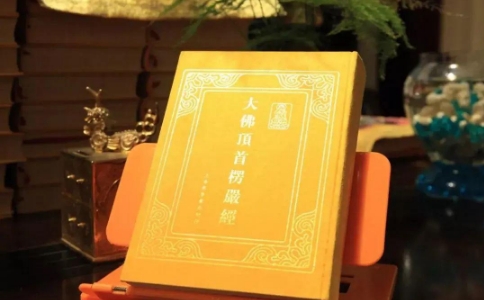
我个人学《法华经》有一段因缘,跟大家分享一下。我读佛学院的时候,其实我喜欢的是唯识学。我那个时候有听《法华经》,但是我最喜欢唯识。唯识的好处,它解释因果很清楚:这怎么回事?我今生没有造这个罪,为什么得这个果报?因为仓库里面有。
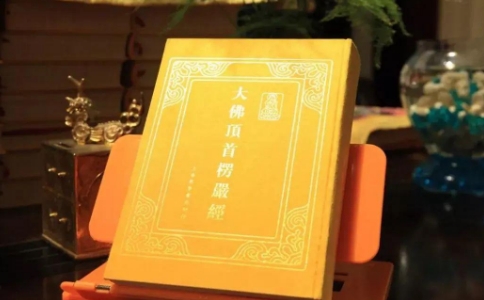
你要想学《楞严经》,放下识心,放下一切执著。就像一张白纸,原来什么都没有,你想怎么画就怎么画;如果你原来有些个形相,你画什么都画不成了。我们要学《楞严经》的时候,先把一些思虑、缘念——就是我们自己所有的一些想法——你都要放下,就像一张白纸似的无知。
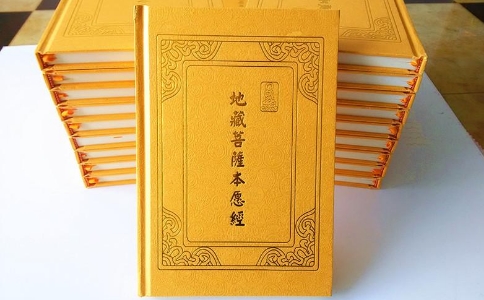
“檀”翻为中文是布施的意思,“六度”首先是布施、“尸罗”是持戒、“羼提”是忍辱、“毗离耶”是精进、禅定,最后第六度是般若。这六度是作为一个菩萨行成就佛果的六大科目,布施度悭贪、持戒度毁犯、精进度放逸、忍辱度嗔恨、禅定度散乱、智慧度愚痴。

居士问:师父,初学者读《地藏经》读第几品?我心里想读第九品的,读全文上班没时间,可以只读第九品吗?一如法师解答:《地藏经》是我们佛门的大孝之经,大乘的孝经,地藏菩萨是大乘的大孝之王,也是大愿之王,所以《地藏经》我们要多读。
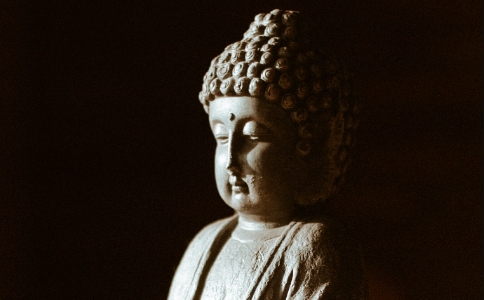
《地藏经》上说:只要在临终时听到佛名,就能得解脱。这句话看似简单,实则义理极其丰富。第一、能在临命终时,听闻到佛菩萨名的,都是福德因缘具足的人。有些老修行,到临命终时,反而业障现前,提不起佛号,甚至无缘听闻佛号,更何况平时不念佛的人,临命终时怎
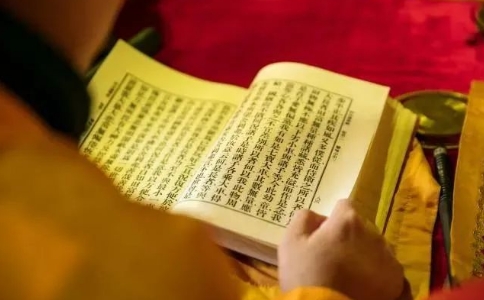
为什么读《地藏经》之前,要先读觉林菩萨偈颂?一切境界都是心变现的,无量地狱相是由心变化的。心变化的是没有的,但是一切众生受地狱苦,它又是实在的。那个实在是非有的,是心所变化的。谁心里又变化个地狱啊?那是你的心变化地狱,这种变化可多了。
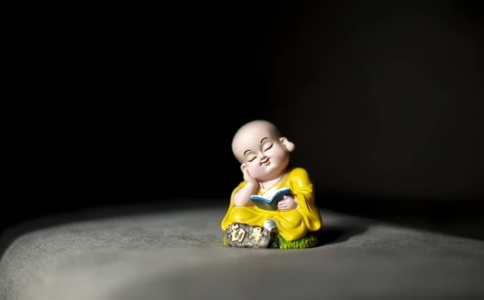
很多人因为在过去受到一些其它观念的影响——《地藏经》晚上不能念啊,念《地藏经》又出现这个那个、那个这个的现象啊,人很容易被暗示,这样一讲了,他马上就出现这种状态,所以说在念经的过程当中,就很容易出现那些幻觉。如果说有那么严重的问题出现,那佛陀首先在
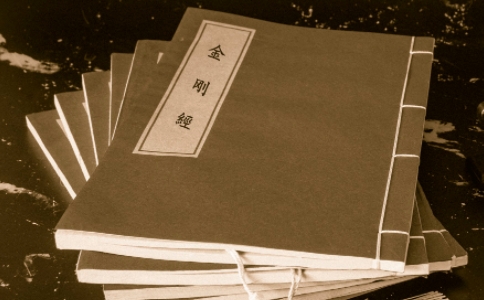
《金刚经》告诉我们的核心思想,其实就是什么?离相修行。前提是什么?你的知见不要搞成,《金刚经》讲一切都是梦幻泡影,是不是让我不修行?这是错误的。我们所有的修行都应该建立在离相的状态,而不是让你不修行。因为很多人就觉得,“师父,一切法都是梦幻泡影”,
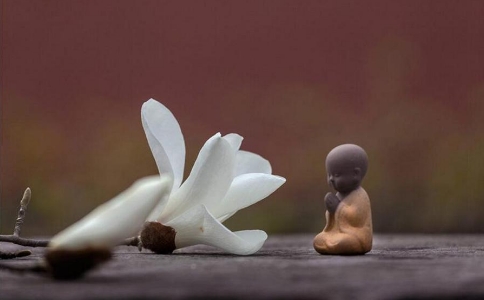
《金刚经》的中心思想是:破除我执和法执。《金刚经》就是告诉我们,如何破除我执和法执,站在生死无常的角度去看待万物,就能用很智慧的方法去看待这个世界,这时内心升起的那种信念和过去完全不一样。看到自己身体,遇到各种事时,习惯以自我为中心思维。

“如来所说法,皆不可取、不可说,非法、非非法。”这里所谓不可取的意思,是说佛法都是一时对治的机宜方便,佛法就像药一样,众生有种种烦恼的病,应病与药,这个药就是法。病好了药就可以不用了。所以说病去则药除,不可执以为真实,都是暂时假借而用,不是究竟之法。
赞助、流通、见闻、随喜者、及皆悉回向尽法界、虚空界一切众生,依佛菩萨威德力、弘法功德力,普愿消除一切罪障,福慧具足,常得安乐,无绪病苦。欲行恶法,皆悉不成。所修善业,皆速成就。关闭一切诸恶趣门,开示人生涅槃正路。家门清吉,身心安康,先亡祖妣,历劫怨亲,俱蒙佛慈,获本妙心。兵戈永息,礼让兴行,人民安乐,天下太平。四恩总报,三有齐资,今生来世脱离一切外道天魔之缠缚,生生世世永离恶道,离一切苦得究竟乐,得遇佛菩萨、正法、清净善知识,临终无一切障碍而往生有缘之佛净土,同证究竟圆满之佛果。
版权归原影音公司所有,若侵犯你的权益,请通知我们,我们会及时删除侵权内容!